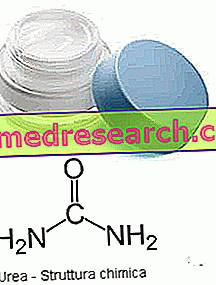Generality
Amorphous urates are microscopic crystals that can be found in urine.
The presence of these crystals in amorphous form indicates that the body cannot properly dissociate uric acid, with the consequent risk of uric calculosis, gout and gouty attacks.

What's this
- Amorphous urates are small crystals that derive from the metabolism of uric acid.
- Usually, these compounds are formed in the presence of large amounts of uric acid, a terminal product of purine metabolism.
- purines are nitrogenous bases introduced by the diet (exogenous) or synthesized by the body (endogenous).
- Uric acid is a waste product of our body; it is formed by oxidation of the purines by an enzyme called xanthine-oxidase and is eliminated for two thirds by the kidney, to then be excreted in the urine. The remaining part is removed through defecation, thanks to the bacteria present in the intestine, which provide for the splitting of this substance.
- In urine at pH 5.3, uric acid is in the form of half-urate ion and as undissociated uric acid for the remainder. Small changes in pH are sufficient to influence the state of dissociation of uric acid:
- If the urinary pH increases, the form of monosodium urate prevails;
- If it decreases, the undissociated form prevails.
- In urine with an acid pH, therefore, the monosodium urate remains slightly soluble and tends to precipitate, potentially giving rise to urolithiasis.
Why do you measure
The presence of amorphous urates is found with the urine test.
To understand the cause of any abnormalities, the doctor can evaluate the urine sample by combining the results with some blood values. In particular, to assess the degree of acidity of urine it is necessary to measure the urinary pH.
When is the exam prescribed?
The examination of amorphous urates in the urine is prescribed along with other tests, which can be performed in the same urine sample.
Usually, the doctor indicates this analysis for the following purposes:
- Control examination to assess the patient's general health status;
- Monitor the evolution of some pathologies and / or the effectiveness of a particular pharmacological treatment;
- To ascertain the causes of specific manifestations (eg reddish and foamy urine, burning and / or pain when urinating, abdominal pain, etc.).
Normal values
Normally, amorphous urates are present in small concentrations in the urine.
Urati Amorphous Highs - Causes
Numerous risk factors can contribute to the increase in uric acid levels within our body. In any case, the finding of many amorphous urates indicates that the subject has a rather acidic urine production.
The most frequent causes are:
- Diet with excessive intake of purines;
- Diabetes;
- Some blood disorders;
- Abuse of alcoholic beverages;
- Some tumors;
- Gout;
- Nephropathy and renal failure;
- Metabolic syndrome;
- Obesity;
- Chemotherapy, abuse of diuretic drugs or intake of pyrazinamide, ethambutol and levodopa;
- Glucose-6-phosphate dehydrogenase deficiency;
- Lead poisoning;
- Polycystic kidney
Urati Bass Amorphous - Causes
Low levels of amorphous urates could be observed in cases of renal disease or chronic alcohol use.
How to measure them
The amorphous urates in the sample can also be highlighted with the microscopic observation of a few drops of urine after centrifugation (urinary sediment).
Preparation
For the evaluation of amorphous urates in urine it is necessary to collect a sample of the intermediate mito (that is to say let go of the very first issue), on an empty stomach, after having carried out a thorough intimate hygiene.
In the case of women, it is good to take the exam away from the menstrual period.
For the examination of amorphous urates, it is best to collect the sample in the morning, when the urine is more concentrated. The urine must be collected in a sterile container, which must be carefully closed immediately afterwards and taken to the laboratory within a short period of time.
Interpretation of Results
The presence of amorphous urates in the urine indicates a certain degree of acidity of the same.
The risks mainly related to this condition are two:
- When the elimination of uric acid with urine is consistent, urate crystals can form, which can lead to kidney stones;
- If amorphous urates are moderately higher than normal, gout may develop, an inflammation of the joints due to the increase in blood uricemia.
Being a parameter that depends mainly on eating habits, it is possible to deduce that a possible approach to fight acid urine consists of a correct diet, which does not involve the abuse of foods with a high purine content.
Therefore, in the presence of amorphous urates in the urine, foods rich in purines (anchovies, sardines, entrails, game, etc.) are not recommended and it is useful to alkalize urine with sodium bicarbonate or potassium citrate, until reaching a urinary pH including between 6 and 7.
In addition to nutrition, it is always advisable to consult your doctor so that he can prescribe the appropriate treatment for lowering the levels of amorphous urates in the urine. In the case of hyperuricemia, for example, specific medications, such as allopurinol, may be indicated.



